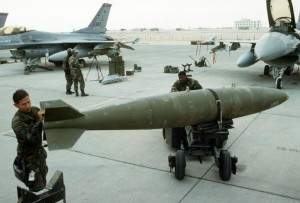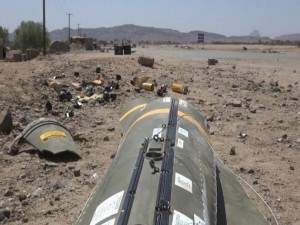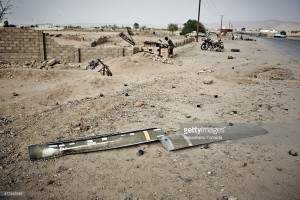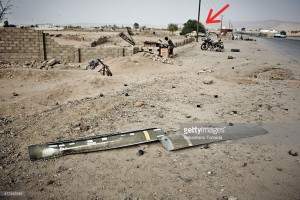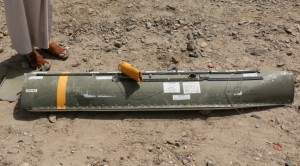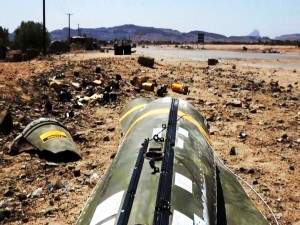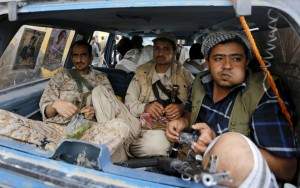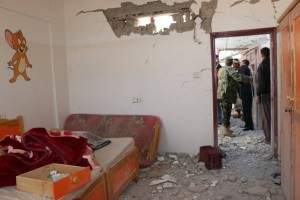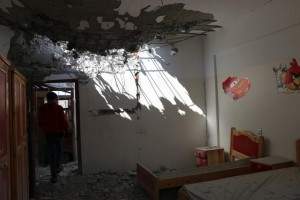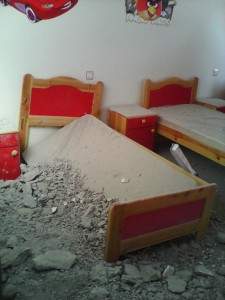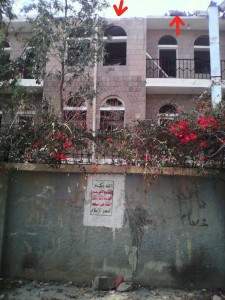Stenographers for terrorists: the depravity of journalists
January 26, 2024 by Thomas Wictor
Before the Gaza war that began in June of 2014, I had no idea that journalists had become stenographers for the most evil people alive. I don’t think this is a conscious decision. The few times I’ve interacted with journalists, they’ve struck me as terminally superficial. Instead, they view the US, Israel, Saudi Arabia and all other developed nations as capitalist warmongers, while the “poor” and the non-lily white always have legitimate grievances.
It’s a dummy’s version of Marxism and “social justice.” Never mind that journalists make their living from capitalism, and the people who always have to be dragged kicking and screaming into war? Capitalists.
Stenographers and Yemen
The three lies I’ll expose in this post are about Yemen. Here’s the first.
Sanaa, Yemen (CNN) A judge who once prosecuted now-exiled Yemeni President Abdu Rabu Mansour Hadi for treason was killed in a Saudi-led coalition airstrike Monday morning, two Yemeni Defense Ministry officials and a Houthi Defense Ministry official told CNN.
Yemeni Judge Yahya Rubaid was killed in his home, along with his wife, son, daughter-in-law and three grandchildren. Five other family members and two guards who were at the home were also injured.
Saudi coalition spokesman Brig. Gen. Ahmed Asseri denied claims that the airstrike targeted the home and civilians.
“We do not target homes. We are looking for Scud missiles. We always confirm, we do not attack residential sites. We attack storage,” Asseri told CNN by telephone.
The judge and his family members are among thousands of Yemeni civilian casualties in this war.
I’ll say it as many times as I have to: You don’t target civilians with precision-guided munitions. The same journalists who claim that the Saudi-led Coalition is wasting $500,000 bombs on civilians also say that the kingdom is facing a terrible cash crunch due to low oil prices. So again, why drop a half-million dollar bomb when you could use an unguided MK-84 2000-lb (946-kg) munition that costs $2300?
The Houthis are a minority group, allied with Iran, that overthrew Hadi’s government and seized power last year. Hadi is now exiled in Saudi Arabia.
No. Sunnis make up 53 percent of Yemen, while Shi’ites account for 45 percent. And Hadi returned to Yemen on November 17, 2015. Here’s a report from January 15, 2016.
Yemen President Abd Rabbo Mansour Hadi ordered on Thursday the governor of the southern province of Shabwa, security services and army officials to step up security measures off the province’s coasts to put an end to spiralling smuggling of oil and people into the country.
Prompted by confirmed information that a small seaport in the province is being used to smuggle arms and fuel to the Al Houthis, Hadi met senior government officials in his palace in Aden and asked them to use “all means” at their disposal to stop the smuggling.
CNN has hired a journalist who doesn’t know that Yemen’s president has been in Aden for more than two months. Also, the report that the judge was killed in an airstrike provides no evidence. Everything coming out of Yemen is either anecdotal or fabricated.
Stenographers and cluster munitions
The stenographers repeat the Houthi claim that the Saudi-led Coalition is dropping cluster munitions on civilians in Yemen.
Banned cluster munitions have wounded civilians including a child in attacks in Houthi-controlled territory in northern Yemen. Human Rights Watch visited the Saada governorate in northern Yemen, including one of the sites that had been attacked, on May 15 and 16, 2015.
“The Saudi-led coalition and other warring parties in Yemen need to recognize that using banned cluster munitions is harming civilians,” said Ole Solvang, senior emergencies researcher. “These weapons can’t distinguish military targets from civilians, and their unexploded submunitions threaten civilians, especially children, even long after the fighting.”
Two lies in one. Cluster munitions aren’t banned. Several nations that depend on others to defend them have voluntarily given up cluster munitions. But the munitions aren’t banned. Only chemical and biological weapons are banned.
Human Rights Watch (HRW) published fake photos that claimed to show an SUU-65/B Tactical Munitions Dispenser (TMD) of a CBU-87 Combined Effects Munition, along with the yellow BLU-97/B submunitions packed inside.
However, we have several other images of this alleged SUU-65/B TMD in Yemen. Here’s one.
It’s the same place as the first photo. The red arrows show a bushy tree, a small metal shed shaped like a barn, and a maroon structure.
You can see that in one image, there are yellow BLU-97/B submunitions, while in the other there aren’t. The BLU-97/B submunitions or bomblets in HRW’s photos are inert. They’re props that were brought to the scene. How do I know?
Unexploded BLU-97/B submunitions are so unstable that they’ll detonate at the slightest touch. Yet the photographer picked one up and put it on the section of the SUU-65/B TMD.
The whole thing is fake. Even after placing all the props, the stenographers still decided to make a composite photo. The “equalization” function of photo-enhancing software reveals that the panel from the SUU-65/B TMD is superimposed.
There’s a white outline around it.
The coalition “denies using cluster bombs in Sanaa”, the Yemeni capital, spokesman Brigadier-General Ahmed al-Asseri told AFP news agency on Sunday.
He was specifically responding to a report issued on Thursday by the US-based Human Rights Watch (HRW), which quoted residents describing a January 6 attack in a manner consistent with cluster-bomb use.
“I think it’s a very weak report,” Asseri said. “They didn’t show any evidence.”
He said HRW mentioned a type of cluster munition “that doesn’t exist in our stock”, adding that 90 percent of coalition operations in Sanaa are directed against Scud missile launchers.
“You cannot use a cluster bomb against Scud launchers,” Asiri said.
Human Rights Watch has no experts in munitions. The NGO thinks that its word is enough. Imagine the arrogance.
Stenographers trip over their own lies
On January 5, 2016, the Houthis and their stenographers accused the Saudi-led Coalition of bombing the al-Noor Center for the Care and Rehabilitation of the Blind.
A Saudi Arabia-led coalition bomb that hit the compound on January 5, 2016, did not explode, but injured four civilians and damaged the capital’s only center for people with visual disabilities.
No. An aerial munition did not hit the school. Here’s one reason I know that.
Houthi forces quickly removed the bomb, so it was not possible to determine its type, Human Rights Watch said.
Sure. These guys are the most cautious and efficient explosive-ordnance disposal (EOD) technicians in the Middle East.
In reality the Houthis fired an artillery round at the school to mimic an air strike. There’s no doubt. The projectile went through the roof but not the floor beneath it.
An aerial munition would’ve gone all the way into the basement.
Here’s the caption to the photo above.
The hole in the roof shows that the munition hit the corridor. But this is what the report says.
At about 1:15 a.m. on January 5, a single bomb hit the roof of the building with the students’ sleeping quarters and penetrated it, but did not explode for reasons that are unclear. It crashed into the third-floor room of Muhammad Hajjar, the compound’s housing supervisor, slightly injuring him.
No. The photos of the bedrooms prove that the munition hit the corridor.
And nobody was in those rooms.
The rubble fell onto bare mattresses.
Finally, the hole in the roof is irrefutable evidence that an aerial munition didn’t hit the school.
Note the heavy damage to the edging (red arrow); the wide, black soot stain coming from the hole; and the gouges and pockmarks made by metal fragments.
In the photo below, you can see the wrecked roof edging, as well as knocked-over structures made of cinder block.
An artillery round with an impact or contact fuse blew a hole in the roof; this detonation also damaged the walls and ceilings of the two bedrooms. Explosive aerial munitions dropped on buildings ALWAYS have delay fuses, so that the bomb can go deep into the structure before exploding.
The munition that struck the school was almost certainly a 155mm artillery round. Iran has delivered unknown numbers of heavy artillery pieces to the Houthis.
What good are journalists? As stenographers of terrorists, all they do is prolong and intensify suffering.
This article viewed 587 times.


